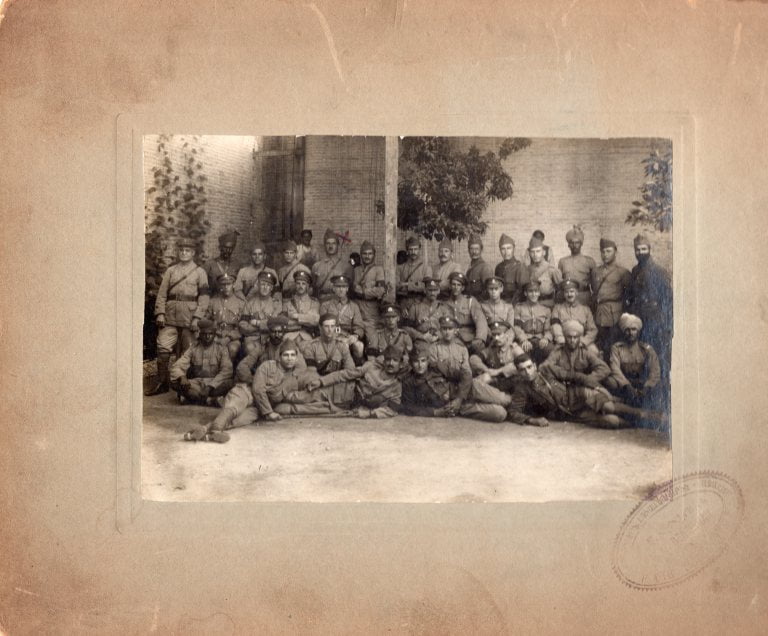A little-known aspect of World War I is the remarkable story of the Armenian volunteers or gamavors (volunteers) in the French Foreign Legion. Men who had escaped the Genocide themselves, through the good fortune of earlier migration, returned to the battlefront to fight with the Allies, hoping to save their families, fellow Armenians and homelands. Beyond its importance as a part of Armenian history, the experiences of these men also provide important insights into the relations between the Allied Powers, especially France and Great Britain, during that period. The Armenians were then a small, powerless people caught in a war that was not their own but which had already destroyed their known world. Today the rippling consequences of some of those decisions continue to undermine stability and efforts towards peace in the region.
The men who volunteered from Europe and the United States were recruited by the Armenian National Delegation, headed by Boghos Nubar Pasha. They needed references of good character and a strict physical examination to present on application in Marseilles where the successful applicants were sent on to Port Said, Egypt. Other Armenians joined them there, including men from POW camps (having served the Turkish army when drafted), residents from around the Middle East, Ethiopia and India. The largest single group of volunteers came from the refugee camp of Port Said where the British and French had sheltered the survivors of the siege of Musa Dagh. After a long training period in Cyprus, the Armenian Legion fought bravely under General Allenby in the Allied Forces’ campaign in the Middle East, playing a crucial role in the winning of the Battle of Arara (Megiddo) in Palestine. This battle proved to be a turning point in the Middle Eastern front and was followed by the Mudros Agreement shortly afterwards with Turkey signing armistice with the Allies.
Later, in Cilicia (now south-central Turkey and northern Syria), members of the Legion faced a more protracted and complex struggle, there also performing acts of heroism. The legionnaires had enlisted with the understanding that they would be fighting against the Ottomans in the area where their own ancestral homes had been. Should the Allies be successful, the Armenian legionnaires would be part of an occupying army in their homelands, laying the foundation for an independent Armenia. Many Armenians, including the legionnaires, placed their hopes on the promises of intervention by the western powers, particularly France and Great Britain. This proved to be a naïve and treacherous belief.
While the legionnaires entered Cilicia to meet the remnants of their people who were returning to rebuild their homes, the war of independence for Turkey, led by Mustafa Kemal, was also beginning. In the short period that followed, the legionnaires did their best to defend newly repopulated towns such as Marash, Hadjin and Urfa but were betrayed by the evolving policies of the great powers whose own priorities had changed. Recognising the power of the new movement led by Mustafa Kemal, and having no further desire and dwindling resources to extend the war, the Allies chose to establish post-war relations with Turkey.
Having encouraged Armenian survivors to return to their homes, the French, whose Mandate covered these towns) departed abruptly leaving the genocide to continue. The Legionnaires were demobilised and spread around the new diaspora, helping to build new communities, continuing their dedication and ideals in the creation of what William Saroyan called “a new Armenia” wherever they were.
(The Armenian Legionnaires: Sacrifice and Betrayal in World War I by Susan Pattie will be published in September, 2018)
Images: Courtesy of Artemis Mateossian



